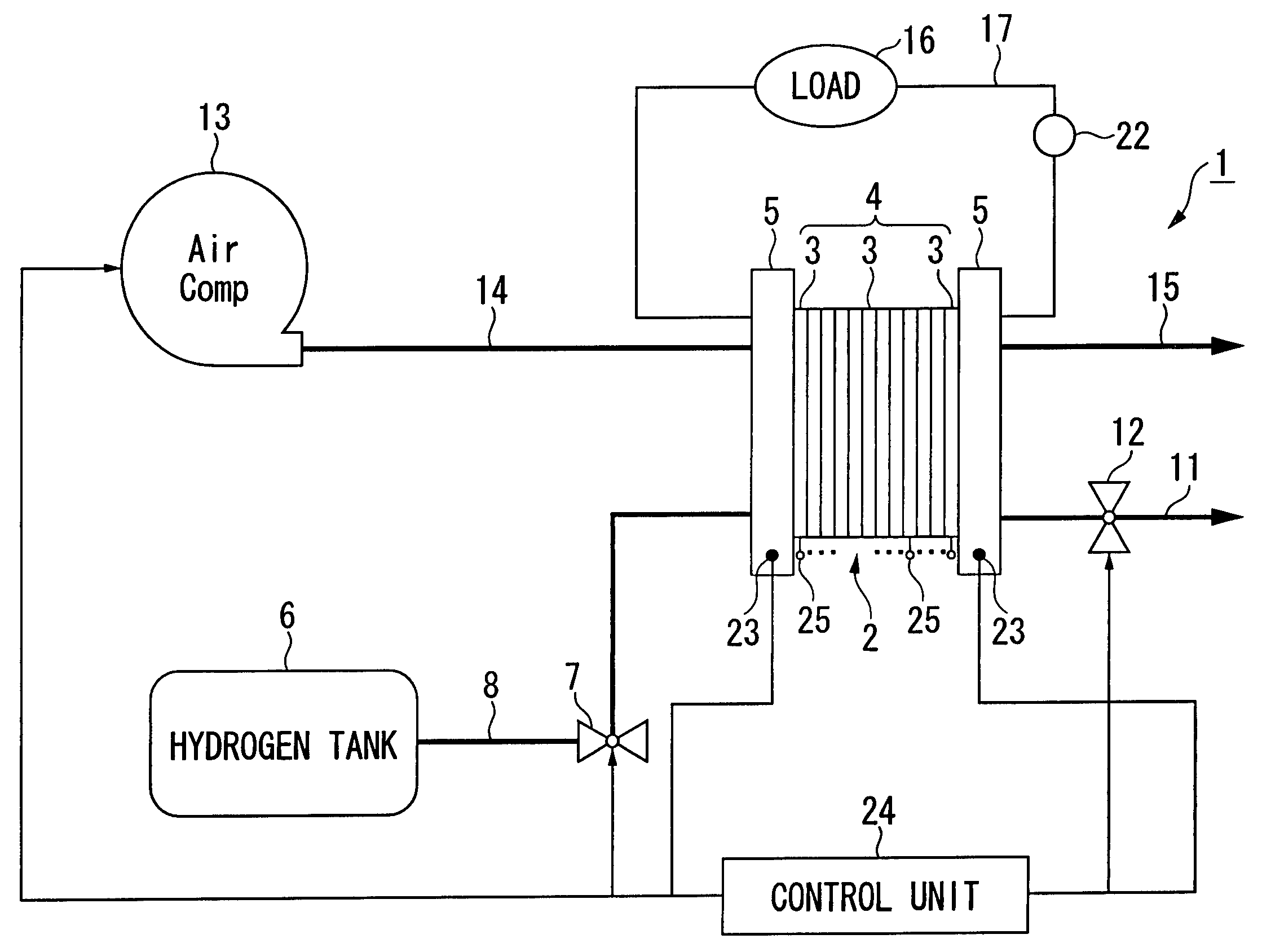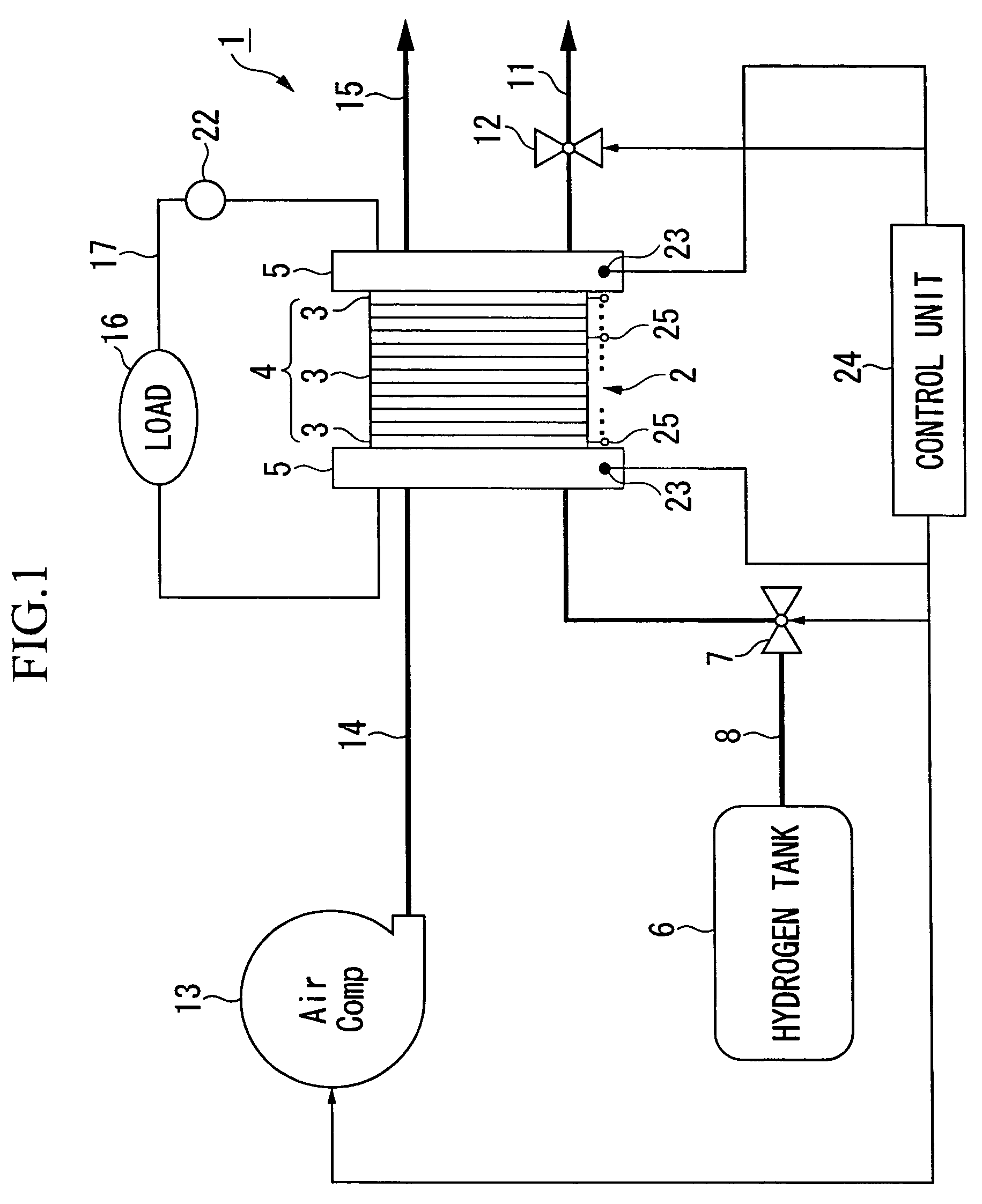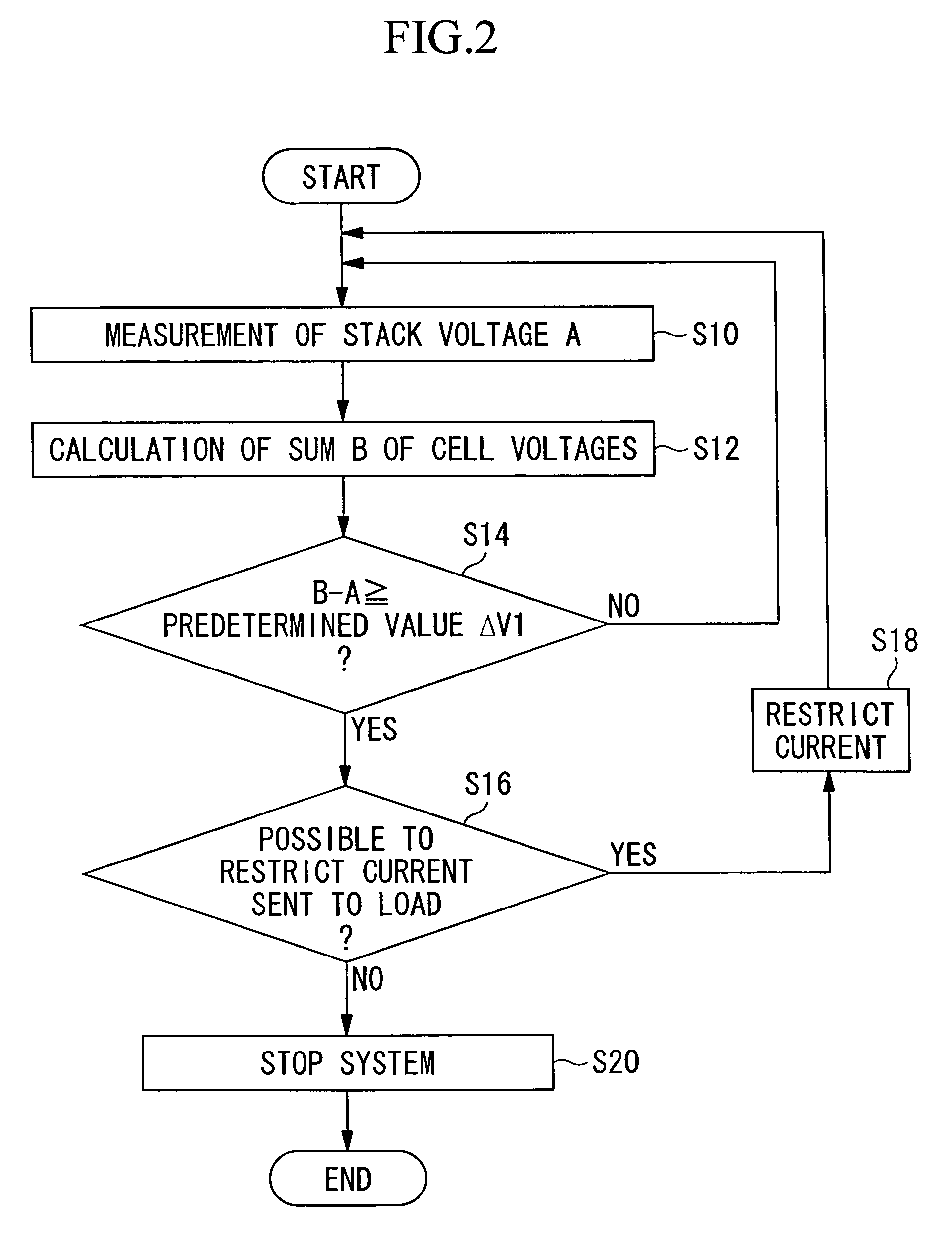Fuel cell system and method of controlling same
a fuel cell and system technology, applied in the direction of battery/fuel cell control arrangement, cell components, electric devices, etc., can solve the problems of insufficient diffusion of reactant gases, drop in cell voltage, and low cell voltage, so as to ensure the power generation performance of a fuel cell, reduce the number of parts, cost and power consumption
- Summary
- Abstract
- Description
- Claims
- Application Information
AI Technical Summary
Benefits of technology
Problems solved by technology
Method used
Image
Examples
Embodiment Construction
[0029]The fuel cell system in the embodiment of the present invention and method of controlling the same is described below with reference to the accompanying drawings. The present embodiment describes a fuel cell system in which a fuel cell is mounted in a vehicle.
[0030]FIG. 1 is an overall configuration diagram of the fuel cell system in the embodiment of the present invention. A fuel cell 2 shown in the drawing consists of a stack 4 composed of a plurality of cells 3 stacked together, with the stack 4 being sandwiched by terminal plates 5. Each cell 3 has a membrane and electrode assembly (MEA), in which a solid polymer electrolyte membrane made of, for example, a solid polymer ion-exchange membrane is held between an anode and a cathode, with this membrane and electrode assembly being sandwiched by separators. Hydrogen is supplied to the anode of each cell as fuel, while air including oxygen is supplied to the cathode as oxidant. Hydrogen ions produced at the cathode by catalyti...
PUM
| Property | Measurement | Unit |
|---|---|---|
| voltage | aaaaa | aaaaa |
| voltages | aaaaa | aaaaa |
| temperature | aaaaa | aaaaa |
Abstract
Description
Claims
Application Information
 Login to View More
Login to View More - R&D
- Intellectual Property
- Life Sciences
- Materials
- Tech Scout
- Unparalleled Data Quality
- Higher Quality Content
- 60% Fewer Hallucinations
Browse by: Latest US Patents, China's latest patents, Technical Efficacy Thesaurus, Application Domain, Technology Topic, Popular Technical Reports.
© 2025 PatSnap. All rights reserved.Legal|Privacy policy|Modern Slavery Act Transparency Statement|Sitemap|About US| Contact US: help@patsnap.com



